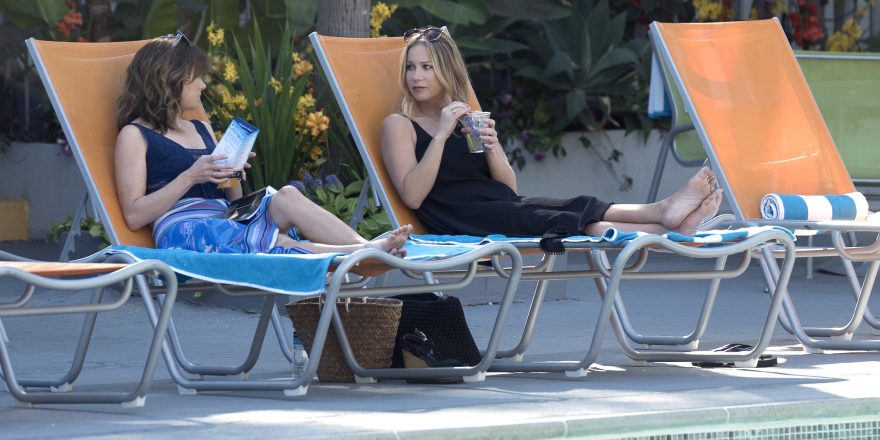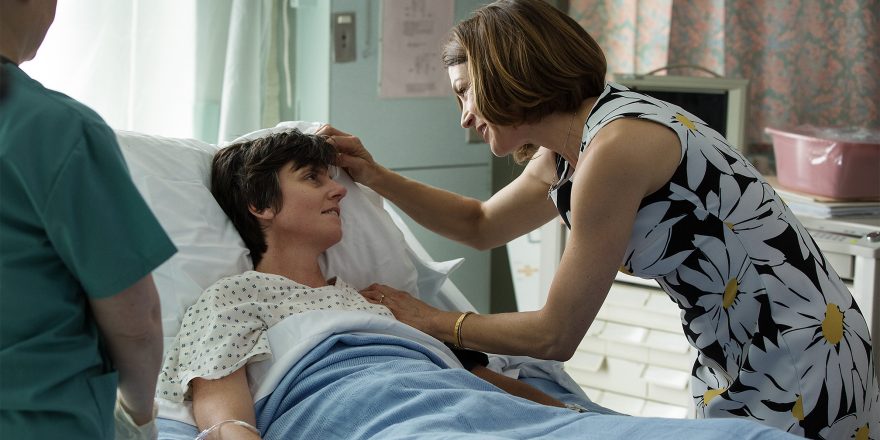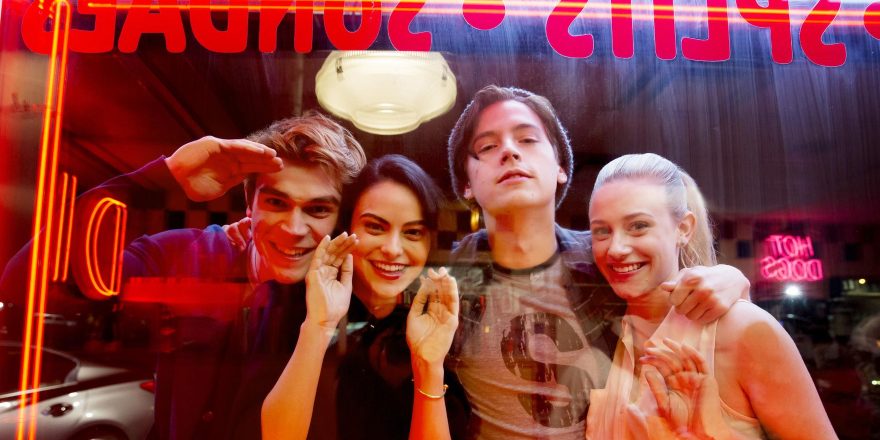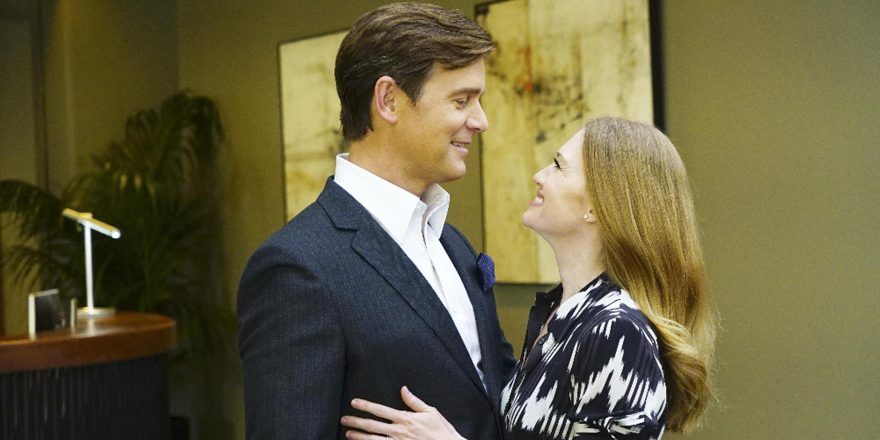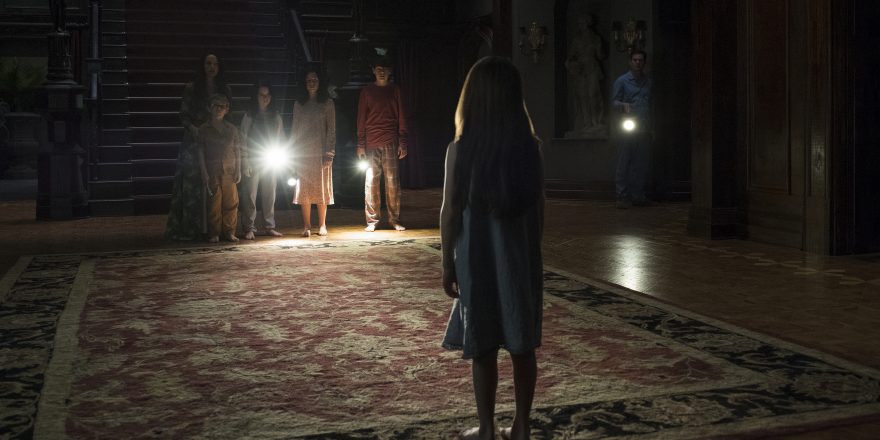There have been great comedies about grief before – Terms of Endearment comes to mind, and Six Feet Under – but there’s never been one quite like Liz Feldman’s Netflix series Dead to Me. In a film like Terms of Endearment, the comedy tends to stop to make room for the moments of despair; the disparate tones don’t blend as much as they alternate. On Dead to Me, farce, anguish, lust, regret, empathy and rage coexist in the same scenes and often even within individual images, creating a viewing experience so audacious that it took me a few episodes to figure out if I even liked it. The show’s style is so distinctive that it’s initially a little jarring; it doesn’t settle into the typical rhythms one expects from television, and Feldman and her collaborators avoid easy laughs where other series would go for the joke and they go for the joke in scenes that other shows would mine for pathos. Until you get acclimated to the series’ unique voice, it’s as uncomfortable as it is inviting – which is, of course, part of the point.
Dead to Me takes on a lot of subjects, but its anchor is the friendship between two women who meet in a support group for grieving spouses. Jen (Christina Applegate) is a real estate agent whose husband was killed in a hit-and-run accident; Judy (Linda Cardellini) is a caregiver whose fiancé died from a heart attack, or so she claims – it quickly becomes apparent to both Jen and the viewer that Judy isn’t being entirely truthful about her situation. Nevertheless, after a few early stumbles, Jen and Judy become close friends connected by loss, though the complexity of that connection isn’t immediately clear, and even when it does become more apparent to the audience, Jen is still in the dark about Judy’s true intentions. A lot has already been written about Dead to Me’s rich portrait of a friendship between two multi-faceted women, and all of the praise is well earned; I don’t think I’ve ever seen a movie or TV show that so accurately depicts the way that two people can simultaneously bond on the most profound level while one or both of them are keeping unforgivable secrets from the other, a theme that extends to other relationships in the series (including Jen’s with her dead husband), and that I think applies as much to male friendships as it does to female.
In fact, as a man, let me praise Feldman and her writing staff for a strength of Dead to Me that has been somewhat overlooked in the shadow of Applegate and Cardellini’s towering and justly lauded performances: its very funny, dead-on accurate, and frequently surprising male supporting characters. While the show unquestionably belongs to Jen and Judy, the writers pay as much attention to the peripheral players as most series do to the leads; characters like Judy’s still-very-much-alive fiancé (James Marsden), Jen’s business partner (Max Jenkins), and an elderly patient of Judy’s (Ed Asner) are simultaneously completely original creations and totally recognizable – not from other TV shows or movies, but from life, where the combination of foolishness and dignity that manifests itself in all of Dead to Me’s characters is so common. A key to Dead to Me’s greatness can be found in the presentation of Pastor Wayne (Keong Sim), Jen and Judy’s grief counselor. Initially, he comes off as a bit of a cliché, a well-meaning but facile mouthpiece for shallow affirmations who’s an easy target for Jen’s – and the viewer’s – condescension. Later in the series, though, Pastor Wayne exhibits an interesting mix of nobility, fragility and self-awareness as Sim and the writers clearly illustrate the character’s depth without forcing it. In lesser comedies, the characters become jokes; on Dead to Me, the jokes become characters.
The early support group scenes that introduce Pastor Wayne, and that introduce Jen and Judy to each other, walk a fine line as the show’s writers, directors and actors honor the points of view of characters mourning in diametrically opposed ways; we’re allowed to both empathize with the characters who find value in Pastor Wayne’s approach and identify with those who find it ridiculous, even offensive. These contradictions are part of why I had trouble warming up to Dead to Me initially; the fact that I wasn’t sure whether I was supposed to be laughing at the characters, laughing with the characters, or laughing at all made me wonder if the makers of the show knew what they were doing. As the Dead to Me progressed, however, it became clear that the simultaneous presentation of warring emotions and the shifts in which a character like Jen could move from cynical wisecracking to uncontrollable sobbing in a manner of seconds were not mistakes, but the source of the show’s power. Again, Six Feet Under came to mind (one of that show’s writers, the brilliant Kate Robin, who showed a similar breadth of emotion and tone in her work on One Mississippi, is a writer on Dead to Me as well), but Dead to Me is both more extreme and more subtle in its effects than that show ever was.
To top it all off, there’s even a suspense component to the series that weaves in and out of the narrative as Judy risks exposure (often due to her own self-destructive actions) of her deepest secret. Feldman, the writers and actors, and the consistently superb directors keep this genre component in perfect balance with the rest of the balls they’re juggling, but the show’s real secret weapon in this regard is director of photography Danny Moder. A couple of years ago, Moder shot what I consider to be one of the most exquisitely photographed series of all time, Amazon’s The Last Tycoon, and he tops himself here with cinematography that is both gorgeous for its own sake and vividly expressive of the show’s emotions and ideas. Moder bathes the characters and the Laguna Beach settings in shimmering sunlight and a vibrant palette that, like the writing, is both inviting and ironically distancing; it’s an irresistible world to get lost in, but there’s a painful contrast between the placid surface and the characters’ inability to find peace. Moder and the series’ directors often frame the characters with a lot of negative space or excessive headroom, emphasizing how adrift they are in a world that keeps moving around them even as their lives seem to have been stopped abruptly by trauma. Like the writers and actors, Moder refuses to fall back on the conventional or obvious, yet he never feels like he’s showing off or being different for the sake of being different. His photography is fully integrated with the writers’ attempt to convey both the absurdity and the tragedy of how everyday life intrudes upon our grief and vice versa. The result is a show in which the filmmaking achieves a harmony and clarity that eludes the characters, as Feldman and her team do what those characters cannot: give a shape and meaning to life’s most unbearable misfortunes.



